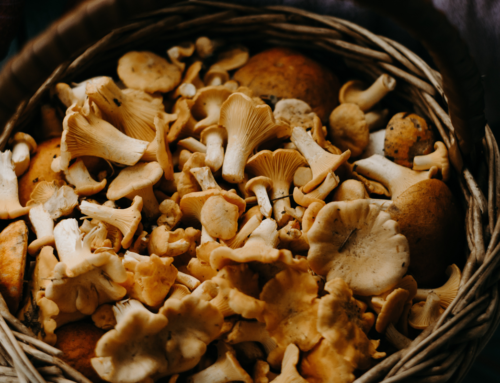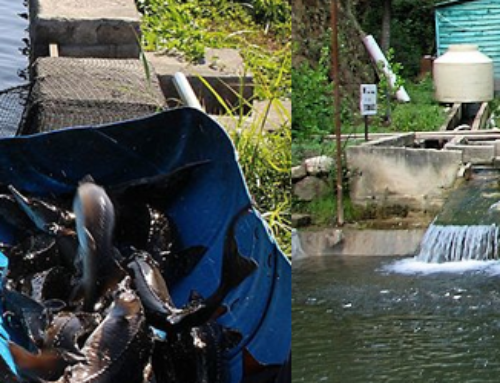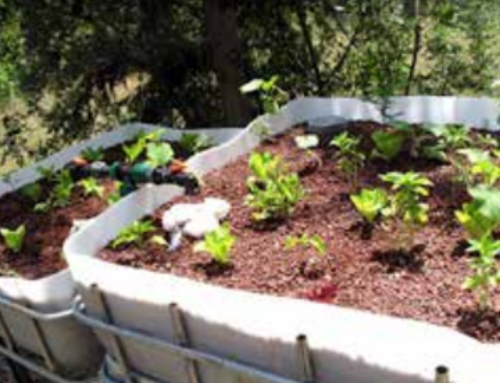Plant Nutrient dynamics
Dissolved nutrients are measured collectively as total dissolved solids (TDS), expressed as ppm, or as the capacity of the nutrient solution to conduct an electrical current (EC), expressed as millimhos/cm (mmho/cm).
- In a hydroponic solution, the recommended range for TDS is 1,000 to 1,500 ppm (1.5 to 3.5 mmho/cm).
- In an aquaponic system, considerably lower levels of TDS (200 to 400 ppm) or EC (0.3 to 0.6 mmho/cm) will produce good results because nutrients are generated continuously.
A concern with aquaponic systems is nutrient accumulation. High feeding rates, low water exchange and insufficient plant growing areas can lead to the rapid buildup of dissolved nutrients to potentially phytotoxic levels.
Phytotoxicity occurs at TDS concentrations above 2,000 ppm or EC above 3.5 mmho/cm.You should have a conductivity meter and periodically measure TDS or EC.
If dissolved nutrients are steadily increasing and approach 2,000 ppm as TDS or 3.5 mmho/cm as EC:
- Increasing the water exchange rate or
- Reduce the fish stocking rate and feed input
However, because these methods either increase costs (i.e., more water consumed) or lower output (i.e., less fish produced), they are not good long-term solutions. Better but more costly solutions involve removing more solids (i.e., upgrade the solids removal component) or enlarging the plant-growing areas.
The major ions that increase conductivity are nitrate (NO3-), phosphate (PO4-2), sulfate (SO4-2), K+, Ca+2 and Mg+2. Levels of NO3-, PO4-2 and SO4-2 are usually sufficient for good plant growth, while levels of K+ and Ca+2 are generally insufficient.
Potassium is added to the system in the form of potassium hydroxide (KOH) and Ca is added as calcium hydroxide [Ca(OH)2].
- In the UVI commercial- scale system, KOH and Ca(OH)2 are added in equal amounts (usually 500 to 1,000 g).
The bases are added alternately several times weekly to maintain pH near 7.0. Adding basic compounds of K and Ca serves the dual purpose of supplementing essential nutrients and neutralizing acid.
In some systems Mg also may be limiting. Magnesium can be supplemented by using dolomite [CaMg(CO3)2] as the base to adjust pH. The addition of too much Ca can cause phosphorous to precipitate from culture water in the form of dicalcium phosphate [CaHPO4].
Na+The Na+ concentration in hydroponic nutrient solutions should not exceed 50 mg/L.
Higher Na+ levels will interfere with the uptake of K+and Ca+2. In lettuce, reduced Ca+2 uptake causes tip-burn, resulting in an unmarketable plant. Tip-burn often occurs during the warmer months. Salt (NaCl) is added to fish feed during manufacture. A producer who orders large quantities of feed could request that salt not be added if this does not affect fish health. If Na+ exceeds 50 mg/L and the plants appear to be affected, a partial water exchange (dilution) may be necessary.
The accumulation of too much nitrate in aquaponic systems is sometimes a concern as fruiting plants set less fruit and produce excess vegetative growth when nitrate levels are high.
The filter tanks in the UVI commercial-scale system have a mechanism for controlling nitrate levels through denitrification, the reduction of nitrate ions to nitrogen gas by anaerobic bacteria. Large quantities of organic matter accumulate on the orchard netting between cleanings. Denitrification occurs in anaerobic pockets that develop in the sludge. Water moves through the accumulated sludge, which provides good contact between nitrate ions and denitrifying bacteria. The frequency of cleaning the netting regulates the degree of denitrification. When the netting is cleaned often (e.g., twice per week), sludge accumulation and denitrifica- tion are minimized, which leads to an increase in nitrate concentrations. When the netting is cleaned less often (e.g., once per week), sludge accumulation and denitrification are maximized, which leads to a decrease in nitrate levels. Nitrate- nitrogen levels can be regulated within a range of 1 to 100 mg/L or more.
High nitrate concentrations promote the growth of leafy green vegetables, while low nitrate concen- trations promote fruit development in vegetables such as tomatoes.
The micronutrients Fe+2, Mn+2, Cu+2, B+3 and Mo+6 do not accumulate significantly in aquaponic systems with respect to cumulative feed input. The Fe+2 derived from fish feed is insufficient for hydroponic vegetable production and must be supplemented with chelated Fe+2 so that the concentration of Fe+2 is 2.0 mg/L. Chelated Fe+2 has an organic compound attached to the metal ion to prevent it from precipitating out of solution and making it unavailable to plants.
The best chelate is Fe- DTPA because it remains soluble at pH 7.0. Fe-EDTA is commonly used in the hydroponics industry, but it is less stable at pH 7.0 and needs to be replenished frequently. Fe+2 also can be applied in a foliar spray directly to plant leaves.
A comparison of Mn+2, B+3 and Mo+6 levels with standard nutrient formulations for lettuce shows that their concentrations in aquaponic systems are several times lower than their initial levels in hydroponic formulations. Deficiency symptoms for Mn+2, B+3and Mo+6 are not detected in aquaponic systems, so their concentrations appear to be adequate for normal plant growth. Concentrations of Cu+2 are similar in aquaponic systems and hydroponic formulations, while Zn+2 accumulates in aquaponic systems to levels that are four to sixteen times higher than initial levels in hydroponic formulations. Nevertheless, Zn+2 concentrations usually remain within the limit that is safe for fish.
Plant growth requirements
For maximum growth, plants in aquaponic systems require 16 essential nutrients. These are listed below in the order of their concentrations in plant tissue, with carbon and oxygen being the highest. The essential elements are arbitrarily divided into macronutrients, those required in relatively large quantities, and micronutrients, those required in considerably smaller amounts.
Three of the macronutrients carbon (C), oxygen (O) and hydrogen (H) are supplied by water (H2O) and carbon dioxide gas (CO2).
The remaining nutrients are absorbed from the culture water.
Other macronutrients include:
- nitrogen (N),
- potassium (K),
- calcium (Ca),
- magnesium (Mg),
- phosphorus (P)
- sulfur (S).
The seven micronutrients include:
- chlorine (Cl),
- iron (Fe),
- manganese (Mn),
- boron (B),
- zinc (Zn),
- copper (Cu)
- molybdenum (Mo).
These nutrients must be balanced for optimum plant growth. High levels of one nutrient can influence the bioavailability of others. For example, excessive amounts of potassium may interfere with the uptake of magnesium or calcium, while excessive amounts of either of the latter nutrients may interfere with the uptake of the other two nutrients.
Enriching the air in an unventilated greenhouse with CO2 has dramatically increased crop yields in northern latitudes.
Doubling atmospheric CO2 increases agricultural yields by an average of 30 percent. An aquaponic system in a tightly enclosed greenhouse is ideal because CO2 is constantly vented from the culture water.
There is a growing body of evidence that healthy plant development relies on a wide range of organic compounds in the root environment. These compounds, generated by complex biological processes involving microbial decomposition of organic matter, include vitamins, auxins, gibberellins, antibiotics, enzymes, coenzymes, amino acids, organic acids, hormones and other metabolites. Directly absorbed and assimilated by plants, these compounds stimulate growth, enhance yields, increase vitamin and mineral content, improve fruit flavor and hinder the development of pathogens. Various fractions of dissolved organic matter (e.g., humic acid) form organo-metallic complexes with Fe, Mn and Zn, thereby increasing the availability of these micronutrients to plants. Although inorganic nutrients give plants an avenue to survival, plants not only use organic metabolites from the environment, but also need these metabolites to reach their full growth potential.
Maintaining high DO (Dissolved Oxygen) levels in the culture water is extremely important for optimal plant growth, especially in aquaponic systems with their high organic loads. Hydroponic plants are subject to intense root respiration and draw large amounts of oxygen from the surrounding water. If DO is deficient, root respiration decreases. This reduces water absorption, decreases nutrient uptake, and causes the loss of cell tissue from roots. The result is reduced plant growth. Low DO levels correspond with high concentrations of carbon dioxide, a condition that promotes the development of plant root pathogens.
Root respiration, root growth and transpiration are greatest at saturated DO levels.
Climatic factors also are important for hydroponic plant production. Production is generally best in regions with maximum intensity and daily duration of light. Growth slows substantially in temperate greenhouses during winter because solar radiation is low.
Supplemental illumination can improve winter production, but is not generally cost effective unless an inexpensive energy source is available.
Water temperature is far more important than air temperature for hydroponic plant production. The best water temperature for most hydroponic crops is about 75 °F (24 C°). However, water temperature can go as low as the mid-60s (15-18 C°) for most common garden crops and slightly lower for winter crops such as cabbage, brussel sprouts and broccoli. Maintaining the best water temperature requires heating during the winter in temperate greenhouses and year-round cooling in tropical greenhouses. In addition to evaporative cooling of tropical greenhouses, chillers are often used to cool the nutrient solution. In tropical outdoor systems, complete shading of the fish-rearing and filtration components lowers system water temperature. In raft hydroponics, the polystyrene sheets shield water from direct sunlight and maintain temperatures that are several degrees lower than those in open bodies of water.
Crop varieties may need to be adjusted seasonally for both temperate and tropical aquaponic production. Plants cultured in outdoor aquaponic systems must be protected from strong winds, especially after transplanting when seedlings are fragile and most vulnerable to damage.
Inorganic hydroponic solutions
Most nutrient solutions are mixed to have concentrations between 1,000 and 2,500 ppm. Acceptable concentrations for the individual nutrient ions, which comprise that total ppm figure, are summarised in the following table. For essential nutrients, concentrations below these ranges often lead to nutrient deficiencies while exceeding these ranges can lead to nutrient toxicity.
| ELEMENT | ROLE | IONIC FORM(S) | LOW RANGE (PPM) | HIGH RANGE (PPM) | COMMON SOURCES | COMMENT |
|---|---|---|---|---|---|---|
| Nitrogen | Essential macronutrient | NO? 3 or NH+ 4 |
100 | 1000 | KNO3, NH4NO3, Ca(NO3)2, HNO3, (NH4)2SO4, and (NH4)2HPO4 | NH+ 4 interferes with Ca2+ uptake and can be toxic to plants if used as a major nitrogen source. A 3:1 ratio of NO? 3 to NH+ 4 is sometimes recommended to balance pH during nitrogen absorption. |
| Potassium | Essential macronutrient | K+ | 100 | 400 | KNO3, K2SO4, KCl, KOH, K2CO3, K2HPO4, and K2SiO3 | High concentrations interfere with the function Fe, Mn, and Zn. Zinc deficiencies often are the most apparent. |
| Phosphorus | Essential macronutrient | PO3? 4 |
30 | 100 | K2HPO4, KH2PO4, NH4H2PO4, H3PO4, and Ca(H2PO4)2 | Excess NO? 3 tends to inhibit PO3? 4 absorption. The ratio of iron to PO3? 4can affect co-precipitation reactions. |
| Calcium | Essential macronutrient | Ca2+ | 200 | 500 | Ca(NO3)2, Ca(H2PO4)2, CaSO4, CaCl2 | Excess Ca2+ inhibits Mg2+ uptake. |
| Magnesium | Essential macronutrient | Mg2+ | 50 | 100 | MgSO4 and MgCl2 | Should not exceed Ca2+ concentration due to competitive uptake. |
| Sulfur | Essential macronutrient | SO2? 4 |
50 | 1000 | MgSO4, K2SO4, CaSO4, H2SO4, (NH4)2SO4, ZnSO4, CuSO4, FeSO4, and MnSO4 | Unlike most nutrients, plants can tolerate a high concentration of the SO2? 4, selectively absorbing the nutrient as needed. Undesirable counterion effects still apply however. |
| Iron | Essential micronutrient | Fe3+and Fe2+ | 2 | 5 | FeDTPA, FeEDTA, iron citrate, iron tartrate, FeCl3, and FeSO4 | pH values above 6.5 greatly decreases iron solubility. Chelating agents(e.g. DTPA, citric acid, or EDTA) are often added to increase iron solubility over a greater pH range. |
| Zinc | Essential micronutrient | Zn2+ | 0.05 | 1 | ZnSO4 | Excess zinc is highly toxic to plants but is essential for plants at low concentrations. |
| Copper | Essential micronutrient | Cu2+ | 0.01 | 1 | CuSO4 | Plant sensitivity to copper is highly variable. 0.1 ppm can be toxic to some plants while a concentration up to 0.5 ppm for many plants is often considered ideal. |
| Manganese | Essential micronutrient | Mn2+ | 0.5 | 1 | MnSO4 and MnCl2 | Uptake is enhanced by high PO3? 4 concentrations. |
| Boron | Essential micronutrient | B(OH)? 4 |
0.3 | 10 | H3BO3, and Na2B4O7 | An essential nutrient, however, some plants are highly sensitive to boron (e.g. toxic effects are apparent in citrus trees at 0.5 ppm). |
| Molybdenum | Essential micronutrient | MoO? 4 |
0.001 | 0.05 | (NH4)6Mo7O24 and Na2MoO4 | A component of the enzyme nitrate reductase and required by rhizobiafor nitrogen fixation. |
| Nickel | Essential micronutrient | Ni2+ | 0.057 | 1.5 | NiSO4 and NiCO3 | Essential to many plants (e.g. legumes and some grain crops). Also used in the enzyme urease. |
| Chlorine | Variable micronutrient | Cl? | 0 | Highly variable | KCl, CaCl2, MgCl2, and NaCl | Can interfere with NO? 3 uptake in some plants but can be beneficial in some plants (e.g. in asparagus at 5 ppm). Absent in conifers, ferns, and most bryophytes. |
| Aluminum | Variable micronutrient | Al3+ | 0 | 10 | Al2(SO4)3 | Essential for some plants (e.g. peas, maize, sunflowers, and cereals). Can be toxic to some plants below 10 ppm. Sometimes used to produce flower pigments (e.g. by Hydrangeas). |
| Silicon | Variable micronutrient | SiO2? 3 |
0 | 140 | K2SiO3, Na2SiO3, and H2SiO3 | Present in most plants, abundant in cereal crops, grasses, and tree bark. Evidence that SiO2? 3 improves plant disease resistance exists. |
| Titanium | Variable micronutrient | Ti3+ | 0 | 5 | H4TiO4 | Might be essential but trace Ti3+ is so ubiquitous that its addition is rarely warranted. At 5 ppm favorable growth effects in some crops are notable (e.g. pineapple and peas). |
| Cobalt | Non-essential micronutrient | Co2+ | 0 | 0.1 | CoSO4 | Required by rhizobia, important for legume root nodulation. |
| Sodium | Non-essential micronutrient | Na+ | 0 | Highly variable | Na2SiO3, Na2SO4, NaCl, NaHCO3, and NaOH | Na+ can partially replace K+ in some plant functions but K+ is still an essential nutrient. |
| Vanadium | Non-essential micronutrient | VO2+ | 0 | Trace, undetermined | VOSO4 | Beneficial for rhizobial N2 fixation. |
| Lithium | Non-essential micronutrient | Li+ | 0 | Undetermined | Li2SO4, LiCl, and LiOH | Li+ can increase the chlorophyll content of some plants (e.g. potato and pepper plants). |




